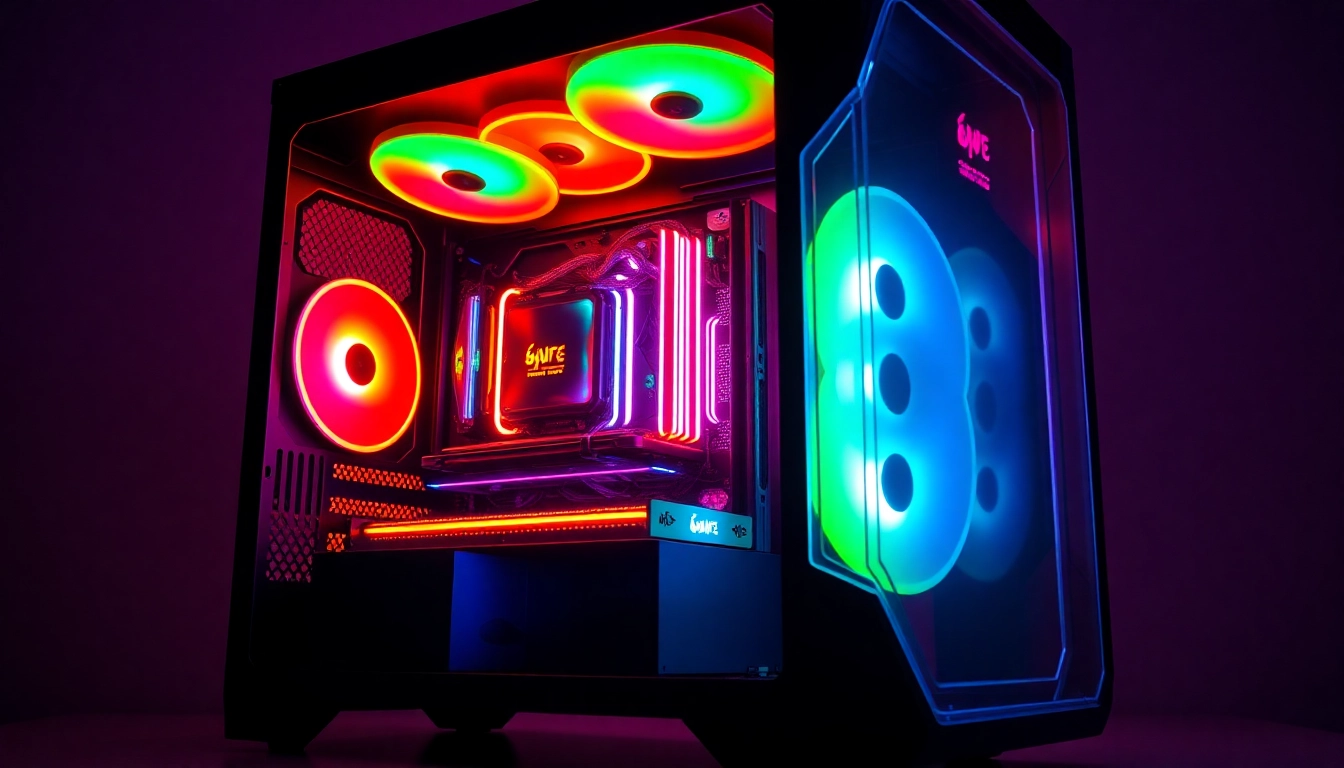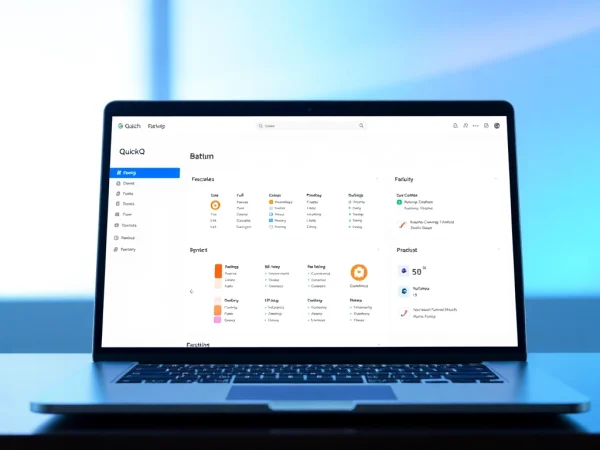Innovative Custom Gaming PC Case Designs to Elevate Your Setup
Understanding Custom Gaming PC Cases
When it comes to building a gaming rig, the custom gaming pc case is often an overlooked yet crucial component. This piece of hardware doesn’t merely serve as a protective shell for your delicate components; it is also a significant part of your overall gaming aesthetic and functionality. Choosing the right case can enhance airflow, accommodate unusual components, and make a statement about your personal style. This guide aims to unpack what defines a custom gaming PC case, the myriad benefits of customization, and how to choose the right materials for your build.
What is a Custom Gaming PC Case?
A custom gaming PC case is a chassis specifically designed for assembling personal computers, particularly for gaming. Unlike standard models, custom cases often offer a range of features tailored to enthusiastic gamers and builders, including unique size configurations, specialized cooling capabilities, and elaborate aesthetic designs integrating RGB lighting, tempered glass, and more. A custom case can be entirely bespoke, engineered to fit specific components or to cater to particular aesthetic preferences, or it could be a compromise, where enthusiasts take an existing model and modify it extensively.
Benefits of Customization
The benefits of opting for a custom gaming PC case are vast:
- Enhanced Cooling Solutions: Many custom cases are designed with superior airflow capabilities, allowing for better thermal management which is essential during intense gaming sessions.
- Aesthetic Appeal: A bespoke casing can reflect personal style, whether through custom colors, designs, or layouts. Gamers can express their individuality with cases themed around their favorite games, movies, or personal interests.
- Optimized Component Fit: Custom cases allow builders to make precise adjustments to accommodate non-standard components like large GPUs or unique cooling systems.
- Better Cable Management: Designed with organization in mind, custom cases often feature built-in cable management systems that keep your setup clean and tidy, improving aesthetics and airflow.
- Future-proof Features: Custom gaming PC cases often come equipped with additional mounting options for extra drives, cooling, and other components, ensuring they remain relevant in the evolving landscape of gaming technology.
Choosing the Right Materials
Materials play an essential role in the construction and functionality of custom gaming PC cases. Common materials include:
- Steel: Known for its durability and strength, steel cases can withstand significant wear and tear while offering excellent shielding against electromagnetic interference.
- Aluminum: Lighter than steel, aluminum cases are easier to manipulate and often feature more advanced finishes, making them popular for premium builds.
- Tempered Glass: Increasingly popular for aesthetic reasons, tempered glass panels allow builders to showcase their components, particularly RGB lighting setups.
- Plastic: Often utilized for budget builds or certain non-structural components, plastic can be lightweight but lacks the durability of metal alternatives.
Popular Trends in Custom Gaming PC Cases
The gaming landscape is continuously evolving, and so too are the trends in custom gaming PC cases. Various creative and functional directions can be observed, influencing how builders approach their setups.
Unique Aesthetics and Themes
Gamers are increasingly gravitating towards unique and themed cases that tell a story. Whether it’s a case designed around a popular game like “Overwatch” or a case that simulates a retro console appearance, the aesthetics are essential for many. Limited edition releases tied to games or gaming franchises are also hot commodities, acting as collectible pieces that offer additional personal value. Custom paint jobs, decals, and printed panels using UV technology further allow for personalization.
Functional Features for Gamers
Beyond aesthetics, gamers are paying closer attention to functional features that improve the usability of their systems. Current trends include:
- Modular Designs: Many cases now incorporate modular components, allowing users to customize their build without needing extensive modifications.
- Smart Features: Some companies have begun integrating technology within their cases, such as temperature sensors and RGB controllers that can be managed via software.
- Integrative Cooling Solutions: Custom cases are increasingly designed to accommodate multiple cooling configurations, including liquid cooling setups as standard.
Incorporating RGB and Cooling Solutions
The incorporation of RGB lighting into custom gaming PC cases has risen sharply. RGB strips enhance the visual experience, creating an immersive atmosphere for gaming. Many manufacturers offer cases with pre-installed RGB fans and accessories that can sync up with your gaming setup. Coupled with advanced cooling solutions, like liquid cooling systems and airflow-optimized designs, custom cases are now more efficient at cooling than ever before, critical for high-performance gaming.
Building Your Custom Gaming PC Case
Creating your own custom gaming PC case can appear daunting. However, understanding the fundamental steps can make the process smoother and more enjoyable. Here’s what you need to know.
DIY vs. Pre-Made Cases
When choosing between DIY and pre-made cases, your decision should depend on personal comfort level, skill, and desired outcome. DIY cases allow for unparalleled customization options, but they also require a deeper understanding of structural integrity and design principles. On the other hand, pre-made cases provide starter options with straightforward setups and reliable build quality. Whether you choose to go custom or not, the resale value and longevity of your PC will likely be improved with meticulous planning.
Essential Tools and Equipment
Collecting the right tools can save considerable time and enhance the building experience. Essential tools include:
- Screwdrivers: A variety of Phillips and flat-head screwdrivers.
- Cable Ties: For proper cable management.
- Anti-Static Wrist Strap: To protect sensitive components from static discharge.
- Thermal Paste: Essential for ensuring proper heat transfer between CPUs and heatsinks.
- Fans and Cooling Systems: Make sure to have a selection of fans or liquid-cooling systems ready according to your preference.
Step-by-Step Assembly Guide
Building your custom gaming PC case can be broken down into manageable steps:
- Plan Your Build: Begin by identifying your desired components and dimensions. Sketch your design to visualize the layout.
- Gather Materials: Collect all materials including the chassis, panels, screws, and necessary hardware.
- Assemble the Frame: Start by constructing the main frame of your case, ensuring stability and accommodation for all components.
- Install Cooling Systems: Set up integral cooling solutions before installing your motherboard and components.
- Route Cables: Utilize cable management to keep your setup tidy, ensuring airflow is maintained.
- Finalize the Design: Add any aesthetic features, such as RGB lighting or decals, before closing up the case.
- Test Your Build: Powered up the machine to ensure all components are functioning. Troubleshoot any issues at this stage.
Where to Buy Custom Gaming PC Cases
Once you’re ready to hunt for a custom gaming PC case, it’s essential to understand where to look. Options range from dedicated retailers specializing in PC components to custom case design businesses.
Top Brands to Consider
Several reputable brands are ideal for sourcing custom gaming PC cases:
- HYTE: Renowned for their beautifully crafted cases that merge functionality with aesthetics.
- NZXT: Offers a range of customizable chassis known for their ease of building.
- Cooler Master: Known for their versatile cases with competent cooling solutions.
- Thermaltake: Popular among gamers for high airflow designs and varied aesthetic choices.
Budget vs. High-End Options
When selecting a case, understanding your budget is crucial. Comprehensive custom cases can vary widely in price based on materials and complexity:
- Budget Options: Many companies produce durable and functional cases that allow gamers to put together a solid setup without breaking the bank.
- High-End Options: Custom builds often come with advanced materials and features offering durability, extensive cooling, and unique designs that attract premium prices.
Finding Online Retailers and Local Shops
Exploring both online and local sources can be incredibly beneficial. Websites like Amazon, Newegg, and manufacturer-specific sites can provide extensive options. Local computer hardware shops can also offer layered services including pre-assembly or installation help, which may be valuable to first-time builders. Additionally, keep an eye on forums and communities where you can trade or purchase second-hand cases.
Maintaining Your Custom Gaming PC Case
Once you have your custom gaming PC case set up, the journey doesn’t end there. Regular maintenance ensures longevity and optimal performance.
Cleaning and Care Tips
Dust accumulation can significantly impact cooling efficiency and performance. Regularly cleaning your gaming case involves:
- Monthly Dusting: Use compressed air to clean fans, heat sinks, and components.
- Interior Cleaning: Every few months, open the case and carefully wipe down components with a microfiber cloth.
- Keep Ventilation Areas Clear: Periodically check that intake and exhaust areas are unobstructed.
Upgrading Components Over Time
As gaming technology advances, so can your requirements. The right custom PC case should facilitate upgrades. Pay attention to:
- Internal Space: Ensure there is ample room for future GPUs and cooling systems.
- Accessibility: Design your internal layout for easy access to cables and components.
- Compatibility: Regularly check that new parts are compatible with older components to avoid bottlenecks.
Common Issues and Troubleshooting
Even with high-quality components and careful assembly, issues can arise. Monitoring temperatures is critical, as overheating can lead to serious performance declines. In cases of system failure or irregular performance:
- Check Connections: Ensure all cables are securely connected and components are seated properly.
- Evaluate Cooling Solutions: Check that all fans are operational and your cooling system is working efficiently.
- Test Components: If issues persist, isolate components to test individually for faults.










